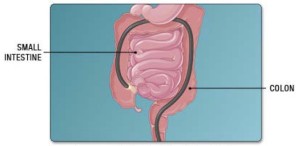Colonoscopy Information
A colonoscopy is a short, 30-minute examination that allows the doctor to visualize the lower part of the gastrointestinal tract called the colon (large intestine). The goal of a colonoscopy is to look for early signs of colorectal cancer (CRC) or other problems. A colonoscopy also checks for bowel diseases or any bleeding in your colon. If colon polyps are detected and removed, colon cancer can be prevented. Colonoscopy is a procedure that provides information that other tests may not be able to give. Still, there are alternative colon cancer screening procedures available for anyone who does not wish to or cannot undergo a colonoscopy.
Typically, screening colonoscopies begin at age 50. A select group of individuals should talk to their physician about having their first colonoscopy before the age of 50. African Americans have a higher risk of developing colon cancer, so their physician may schedule their first screening by the age of 45. You may also be getting this done before you’re 50 if:
- There’s a history of colon cancer in your family
- You have a (or your doctor thinks you may have) a bowel disease like ulcerative colitis or Crohn’s disease
- Another test your doctor ran found something that shouldn’t be in there (like blood or a polyp)
Other reasons a colonoscopy is done:
- A change in bowel habits
- Bleeding
- Pain in your abdomen
- Loss of appetite
- A condition like anemia
If you ever had polyps or colon cancer in the past, colonoscopies are done as surveillance to make sure there aren’t any new polyps, or that the cancer hasn’t come back.
Your Colonoscopy Appointment
Once you are under sedation, a clean and lubricated scope is gently placed in your rectum. The scope is a long, hollow, and lighted tube. A tiny camera on the end sends video to a monitor so the doctor can see the inside of your colon. The scope then blows a little air into your colon. This makes it easier for the scope to pass through the colon and allows for better visualization. The goal is to move the scope all the way to where the colon meets the small intestine (see below). In most people, the scope passes through the colon easily.
If the doctor sees anything (like a polyp or an area that looks inflamed) they will remove it and/or take a sample. Anything the doctor removes is sent to pathology for tissue analysis.
The doctor then slowly withdraws the scope out, examining the colon along the way. Finally, the scope is gently removed, and the procedure is over.

